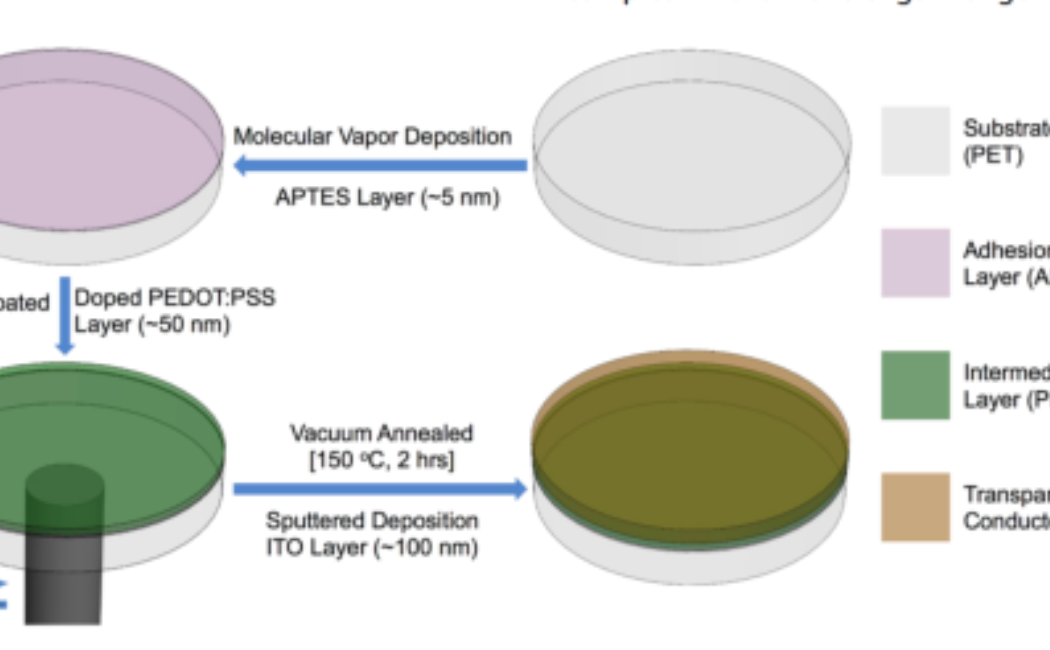


12 May, 2019
Conductive electrodes are major components of flexible optoelectronic devices. However, existing materials are either very conductive but brittle (e.g., ITO [indium tin-oxide]), or non-brittle but less conductive, with an environment-dependent conductivity (e.g., PEDOT:PSS [poly-(3,4 ethylenedioxythiophene): poly (styrene sulfonic acid)]). Here, we propose a new design that simultaneously takes advantage of both the high conductivity of ITO and the high flexibility of PEDOT:PSS. In our design, a PEDOT:PSS interface is inserted between the film substrate and the ITO layer, creating a hybrid layered structure that retains both its high conductivity and high stability, when the film is deformed. The rational behind the creation of this structure, is that PEDOT:PSS, used as an interface between the locally delaminated ITO layer and the substrate, substantially reduces the detrimental effects of cracks on the electrode’s conductivity. These results open the path for a new generation of transparent electrodes in advanced flexible devices.